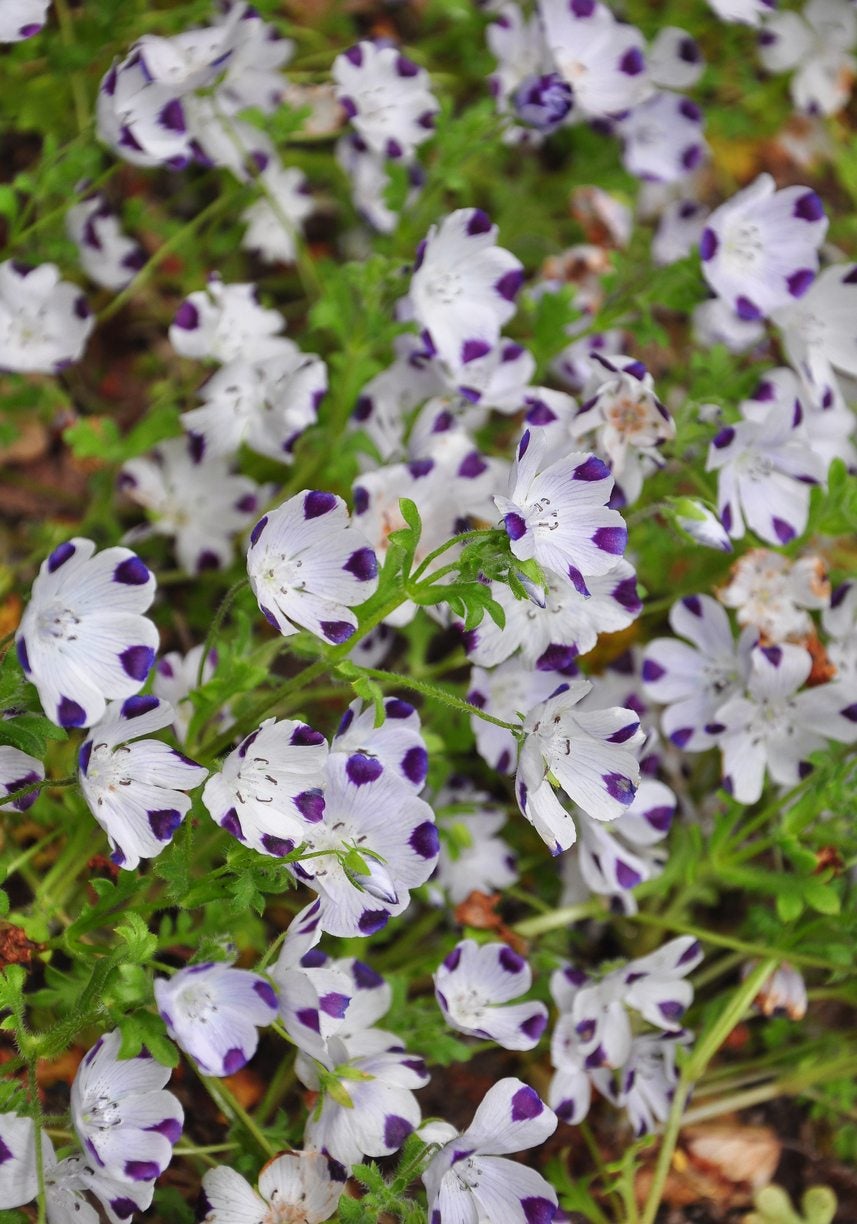Five Spot Seed Propagation – Growing Baby Blue Eyes From Seeds


Five spot, or baby blue eyes, is a native North American plant. These annuals develop into low growing plants adorned with white flowers whose petal tips have been dipped in bright blue. They are propagated by seed and will self-sow at the end of the season. Continue reading to find out when to plant five spot seeds and how to care for these little plants.
Five Spot Seed Propagation
For those of us thrifty gardeners, starting our own plants from seed is an economical way to produce our own flowers, fruits, and more. Growing baby blue eyes from seeds is quite simple and soon you will have a lovely group of these charming flowers. Also called five spot, these annuals tend to self-seed, but you have to have a mature crop first. Sow five spot seeds in containers indoors and move them outside to bloom and establish. In no time at all, you will have plenty of indigo marked flowers. Growing five spot from seed may be done directly into the garden or indoors in flats, but the key is knowing when to plant five spot seeds for the best chances of success. Early spring in most zones is the optimal time to sow. Growers in zones below USDA zone 7 will need to start plants indoors about six to eight weeks before the date of the last frost. In higher zones, sow five spot seeds directly into soil once it is workable. These warmer regions may also sow into cold frames in autumn or in a cool greenhouse. Seeds planted in fall will bloom in spring while seeds planted in spring produce blooms all summer.
Growing Five Spot from Seed
Five spot seed propagation results in germination within 7 to 30 days. Seeds need well-draining soil and should be pressed onto the surface of the soil. Keep flats where there is plenty of light and situate seeds outside in indirect sun. Once plants have germinated and retained two sets of true leaves, they can be grown in partial or full sun. Harden off seedlings before transplanting them outdoors. During germination and after, keep flats or the planting site moderately moist. Thin seedlings as needed to allow the strongest to produce mature plants. After you have large enough baby blue eyes from seeds, they will need moist soil and at least half a day of sun. The blooms will appear within a couple of months. Each flower is short lived but the plant produces new ones prolifically. They make great bedding plants, trailing specimens, or used in combined flower containers. To continue propagating each year, you can collect and save the seeds. After flowers are spent, a small seed pod forms. Wait until these are dry and harvest them. Crack the pod and shake seed into a plastic sealable bag. Store in a cool, dry, dark location until the next spring and start the process anew. You will soon have another batch of these attractive natives to festoon your patio or garden beds.
Sign up for the Gardening Know How newsletter today and receive a free copy of our e-book "How to Grow Delicious Tomatoes".

Bonnie Grant is a professional landscaper with a Certification in Urban Gardening. She has been gardening and writing for 15 years. A former professional chef, she has a passion for edible landscaping.